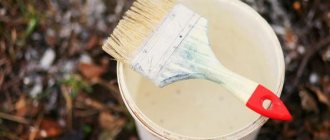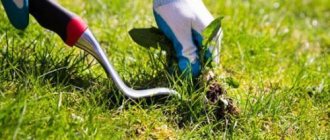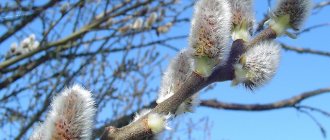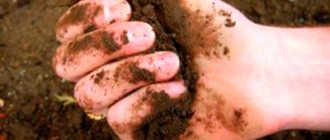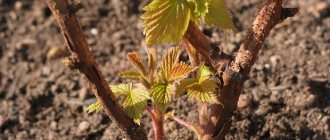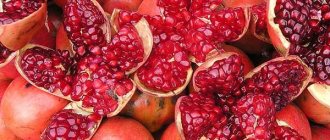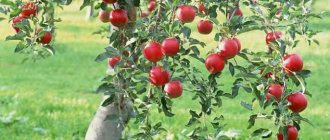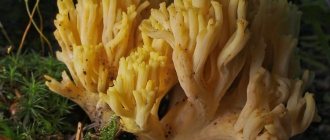Author: Oleg Maltsev
Every spring we see workers on the streets carefully covering tree trunks with white paint. This phenomenon has already become traditional in our country. But what is it really: a tribute to tradition or really a necessity? In this article we will tell you whether trees actually need constant whitewashing. What benefits does this process bring, and how can it harm plants? We’ll also find out when and what to whiten trees with.
Why are trees whitewashed?
Each tree is a complex organism, very vulnerable and vulnerable. In order to protect the internal “organs” of the plant, nature has endowed the branchy greenery with an outer shell – bark. And in order for this shell to be a reliable shield, it needs a little help, for these purposes they use a method such as whitewashing trees . What can such a barrier protect against?
- Heat. Here is one of the most dangerous impacts for these perennials. And we’re not just talking about hot summer days; the sun is also scorching in the winter months. The result is dehydration of the top layer. And when the water balance in the bark is disturbed, it begins to become covered with cracks. To reflect this destructive light, an external protection is needed, and its white color serves this purpose.
- Relief from the cold. Almost in the same way as hot air and bright rays, frost affects the “skin” of a tree. The consequences are the same, as are the remedies. So whitening trees with lime solves several problems at once.
- This treatment is a barrier to various types of pests. This includes fungi, which love to infest areas already weakened by the vagaries of the weather, and various kinds of beetles, caterpillars, and rodents.
And if you don’t whitewash
You don’t have to whitewash, but you still need to protect the trees. To do this, you can wrap the tree, or rather, only its trunk, with spruce branches. To protect from the sun's aggression, wrap the top with white paper.
When wrapping, consider how much snow cover is expected in winter. This option is well suited for young trees and seedlings, which are better not to whiten at all.
Whether to whitewash the trees or not is up to you. In any case, you need to take care to protect your trees from the sun and insects.
Video: Why are trees whitewashed?
Sources:
https://womy.ru/post/dlya_chego_belyat_derevya/
https://derevoved.com/borba-s-vreditelyami/pobelka-izvestyu/279-zachem-belyat-derevya
https://glav-dacha.ru/pobelka-plodovykh-derevev-vesnoy/
https://small-village.com/ozelenenie/zachem-belyat-derevya.html
https://floristics.info/ru/stati/ogorod/3250-pobelka-derevev-vesnoj-kak-i-chem-belit-derevya.html
https://7dach.ru/tangeya/belit-ili-ne-belit-vot-v-chem-vopros-10368.html
https://megaogorod.com/atricle/2470-zachem-belyat-stvoly-derevev-v-sadu
What trees need this kind of care?
These are both very young plants and already mature ones. This is the opinion of the majority, but not all. Some gardeners believe that such camouflage will harm the young plant. After all, the calcareous shell can burn its thin bark.
And there is some truth in this. Therefore, for young specimens it is best to use other types of compositions, including paint. This is especially true for those branched ones that are grown in nurseries.
They are usually cramped, because of this they do not receive much light, and therefore they do not have immunity to the effects of rays. If I suddenly find myself in an aggressive open-air environment, the tree may not withstand the heat.
Another argument in favor of abandoning such a coating is that it can hinder growth, because the created layer will not allow the trunk to increase in diameter, or rather, it will restrain its growth.
Young trees should be whitened using the most gentle compounds or paint
What are the benefits of whitewashing trees?
In the city, the aesthetic aspect neutralizes the practical one. Often housing and communal services employees do not pay any attention to the care side of the issue.
In any city at some point these people in orange uniforms appear. Their goal: to improve the appearance of streets, parks and squares in a short time.
Experienced gardeners appreciate the positive effect this procedure can achieve. They carefully follow all the necessary algorithms of action.
School knowledge regarding color, acquired in physics lessons, does not allow us to forget that the darker the color of an object, the more strongly this object absorbs sunlight. Since the tree is living, this can be fraught with consequences for it in the form of burns.
A surface that has been burned due to prolonged exposure to sunlight can be identified visually. If there were any leaves or young shoots on this surface, they all die.
Painting the trunk white or slightly bluish will avoid overheating of the trunk in those places where it is most sensitive and where the bark can crack, exposing the burn surface.
Lime is a caustic substance. Using it in the process of making the solution helps burn out small insect pests from the bark. The same can be said for pathogenic bacteria.
Typically, parasites tend to attack young representatives of fruit species, since there is always something to profit from under the bark of a young tree, but you should not neglect treating the “old ones.”
A trunk that has been exposed to pathogenic bacteria is immediately visible. It is quite difficult to treat, it takes an impressive amount of time. To prevent problems, you should use a whitewash solution.
How to whitewash trees?
Contrary to the assumptions of many, several types of solutions are used for these purposes. Such as:
- Lime based mixture. In addition to the calcium oxide itself, glue is mixed in there. Not just any binding component will do. They use one that is on a natural basis. For example, the one made from milk protein is casein. The third component is copper sulfate. Capable of imparting disinfectant properties to the composition.
- Water emulsion. (Attention! Not the kind intended for painting.) This paint composition can cope with such a task as serving as a coating for bark. The tree will not suffocate in such “clothing”; the layer is vapor permeable.
In addition, water procedures and sunbathing will not destroy it. However, the previous option, according to many older generation gardeners, is much more acceptable and effective in such a matter as whitewashing tree trunks .
- Acrylic paint. She has many advantages. First of all, it is very easy to apply. Secondly, it will last better than its competitors, on adult plants - up to two years. One of the advantages is that you can do without antiseptics, because they are already included in the coating. But, get ready to pay more for it than for other composition options.
Each type of mixture has its own tools. Some things will be more convenient to apply with a brush, while for others a roller will be much better suited. If the composition is liquid, then you cannot do without a sprayer.
Preparing trees for whitewashing in spring
Before whitewashing:
- lay plastic film under the trunk;
- The trunk is cleaned with the blunt side of a knife or a brush from loose bark, lichens, hollows, wounds, cracks to living tissue. This procedure is similar to facial peeling. After removing the dead scales, the tree is overgrown with young bark;
- brush off the dust;
- remove the film with fallen debris and burn it;
- cover cracks and wounds with garden varnish to prevent infections from entering;
- disinfect the trunk with a solution prepared from 5 liters of water, 20 g of laundry soap and 1.5-2 kg of ash.
When to whiten
It is very important to choose the right time of year for such a procedure. If we talk about the most ideal period for such work, it is whitewashing trees in the fall . Indeed, contrary to popular belief, the most scorching rays of the heavenly body are in winter.
So we recommend starting work in October, the region – in November. Then the plant will withstand frost without any difficulties. But if you neglect this procedure, then by the end of winter, the beginning of spring, the situation can become catastrophic.
When the sun becomes more active, movement through the “blood vessels” of the tree will resume again during the daytime, and at night this sap will freeze due to a drop in temperature. Such processes inevitably lead to cracking of the barrel surface.
The main thing is, do not be alarmed if you have treated the trunk, but at the usual time your tree is not covered with flowers; it will do so a little later. But this will help preserve the nascent buds from frost.
It is very important to whiten trees in the fall before the onset of cold weather.
What do we see after the cold weather passes? As a rule, the protective layer becomes unusable and simply crumbles. Therefore, whitewashing trees in the spring is also necessary. It is necessary to update the layer. By the way, deadlines for whitewashing trees in the summer. This is usually the height of the season, in mid-July.
In order for the application process to proceed correctly, the plant must be prepared. To begin with, you will have to go over the trunk with a brush, but not a metal one, that’s too much. The same can be done with an ordinary household glove.
As a result, the already dead, dried bark will fall off. If there are deep cracks in which dirt has settled, take an ordinary wood chip, or a wooden spatula, and try to scrape out everything unnecessary from the recesses.
Everything that was cleared from the tree is not at all safe garbage that can be left right next to the plant. This breeding ground for pests can be disastrous for garden dwellers.
Therefore, we must either collect all the waste, or lay a bag on the ground in advance, on which all the cleaning will fall, and then roll it up and take it to the trash. Next it will be time for disinfection. “For what,” you ask?
So, the very same harmful organisms that huddled in the bark could easily penetrate deeper. Plus, severe “injuries” during the cleaning process cannot be ruled out; pressing a little harder on the instrument can damage the tissue of a living organism. Therefore, disinfection of such areas is a mandatory process.
Regardless of the chosen whitewashing option, do not forget about personal protection measures (gloves, mask, etc.)
Timing of whitewashing
An important question is when to whiten trees in the garden in spring or winter, and at what temperature. A frequently repeated mistake is whitewashing trunks in early spring, when nature comes to life and the first work in the garden begins. This is often practiced and is a result of ignorance and the prevalence of such practices.
For whitewashing to be effective and bring the expected results, it must be done in a timely manner. Work should be carried out before the onset of severe winter, which damages the structure of the bark and trunk.
The deadline is no later than the beginning of January, provided that the winter is not too cold. Treatment must be completed before February, when it becomes very cold, especially at night, and sudden cold and ice can damage the trunks. If weather conditions permit, you can whiten fruit trees at the end of November or December.
It is also important at what temperature the work is carried out. It is advisable to choose a day with a positive temperature, perhaps with a slight frost, because the lime will quickly freeze in the cold.
If there is heavy rain after whitewashing, you will have to repeat the treatment in February.
Means for disinfecting damaged areas
Chemical (Their supporters claim that other methods cannot achieve a good effect. Opponents say that if such mixtures are constantly used, they accumulate both in the soil and in the plant itself, and as a result have a detrimental effect on it):
- Iron sulfate, or rather its solution. To prepare the correct composition, you need to take the following proportion as a basis: for ten liters of water we take half a kilogram of the substance.
- Compositions with copper. If you are interested in pre- whitening trees with copper sulfate , then when diluting the mixture, use the same scheme as in the previous case.
- Powdered fungicides, quite potent, such as hom, phytosporin. When diluting, take very little, 30-40 grams for the same 10 liters of water will be quite enough.
- Oksikhom. Has broader abilities, unlike its counterpart. Therefore, it is worth reducing the dose of the substance by half, i.e. We take only 20 grams.
Natural:
- Infusion of ash. In order to knead it, you need ten liters of boiling water, into which you need to pour about 3 kilograms of ash, but do not forget to sift it first. This whole mixture will not stick to the surface of the wood unless a binder is added to it.
Regular laundry soap acts as glue. You won't need about a quarter of a standard briquette of 200 grams. After everything is ready, do not put off the work; you need to apply the mixture before it cools down.
- If you don’t want to bother with applying medications, you can use a sprayer. To do this, you should make ash liquor. We take water and ash in the same proportions as described above, combine and put on fire. When all this boils, the liquid we need is formed, and we use it for irrigation.
After such treatment, original patches need to be made on large open areas of plant tissue. This is protection from various kinds of dangers, and from premature and too rapid loss of moisture.
Garden pitch is the most favorite putty of gardeners. You can buy it in a store or make it yourself. If there are different alternative options. Garden stores offer various pastes, they are ready-made, you don’t need to mix or add anything.
how to properly carry out such a process as whitewashing garden trees :
- Do not try to spread the mixture with lime too much; a thin layer does not mean a good one. It should be quite dense, but not thick. If you use paint, you can apply a thinner composition.
- No precipitation. Keep an eye on the weather forecast; apply the solution on a dry day without rain. When it comes to applying paint, the temperature is also important, at least +3.
- Under no circumstances use anything you could find in your own basement for such a task. Whatever paint is not suitable, it may do more harm than good. Go to the store and look on the shelf for a product marked “ paint for whitewashing trees .”
Now another important point - how high should the whitewash layer reach? You have probably already noticed that the plants on city streets have very low “white skirts”. According to the standard, they are whitened to about a meter in height. Maximum – 1.20 m. And this is completely wrong. Such a modest “outfit” is not capable of protecting from frost.
If possible, apply the composition as high as possible. For an already strong plant, this is at least one and a half meters. Those. You must capture the entire trunk and a third of the thick branches, they are also called skeletal.
By the way, do not forget that you need to whiten not only as high as possible, but also as low as possible. Within reasonable limits. Before you begin, rake the soil around the base of the trunk a little to get the brush over it. And then return the soil to its place. The main thing is not to overdo it with depth. Otherwise, instead of doing good, you will cause harm.
Trees should be painted as close to the ground as possible and at least to the skeletal branches.
Whitewashing plant trunks is one of the main spring work
Coating trunks with a known solution, both in spring and autumn, is mainly a preventive procedure.
A garden in which well-groomed trees stand in slender, whitish rows can attract attention at first glance.
After a long winter, a hot spring comes. Whitewashing trees can save the trunk from overheating, which is inevitable during periods of sudden temperature changes.
The trunk of a tree is its most sensitive part, located next to the root system. Damage to it can lead to its death, which is why it is customary to whitewash it.
How to prepare a whitewash solution
Now let's talk about what the composition of whitewash for trees , prepared at home:
- White component. It is needed to reflect light. This is either lime or chalk.
- An adhesive substance (clay, milk, soap, as already mentioned, or, in fact, glue). Please note that if you use PVA glue, the plant simply will not be able to breathe, so it is worth paying a little extra for a product made from natural ingredients. And in order not to rush away, cutting the soap into small pieces, take a grater and just grate it.
- Something for disinfection.
- Manure. An optional, but still often found component in mixtures of this kind. In addition to its viscous properties and even disinfectant, such an inclusion can serve as a top dressing for the garden dweller. So it definitely won’t be superfluous.
Here are some examples with specific components and their quantities:
- Take 10 liters of water. Mix 2.5 kilograms of lime into it and add half a kilo of copper sulfate. And finally, the final touch is casein glue, there should be 200 grams of it.
- For this amount of liquid, take two and a half kilograms of chalk. Plus ten spoons of regular flour paste.
The paste should be smooth and not very thick, like sour cream. And when you apply it, make sure that the layer is not more than 3 millimeters. If suddenly you are worried not only by small pests, but also by hares encroaching on the health of your garden, then you can include another component in the batch that will scare off the annoying eared ones.
We are talking about carbolic acid, you only need a tablespoon of it. If you want water-based paint to protect not only from the vagaries of nature, but also from various bugs, then you need to include a copper component in the mixture.
Whitewashing technique
For whitewashing, use lime milk - a mixture of lime and water in the proportion: 2-3 kg of lime per 10 liters of water. You need to prepare a bucket and a brush with fairly soft bristles (in accordance with the diameter of the trunk).
How to prepare lime milk:
- Pour water into a bucket or bowl.
- Add lime.
- Mix both ingredients until you get a white “paint”.
- To increase the adhesion (sticking to the surface) of the mixture, you can add a little crushed clay, starch, flour, mullein to the mixture (a little so that the mixture does not change color). Then the lime paint will not run off during rain or snow.
- You need to mix the solution well so that there are no lumps, and apply it to the trunk with a brush or broom.
Attention! Be sure to wear gloves and safety glasses. Splashes of the mixture and bark particles may get into your eyes. Protect your eyes when bleaching; lime is a strong irritant. In case of contact with skin, rinse with plenty of warm water.
Probably one coat of paint is not enough, so you will have to apply it several times, remembering to especially carefully cover the sunny side of the trunk and branches.
